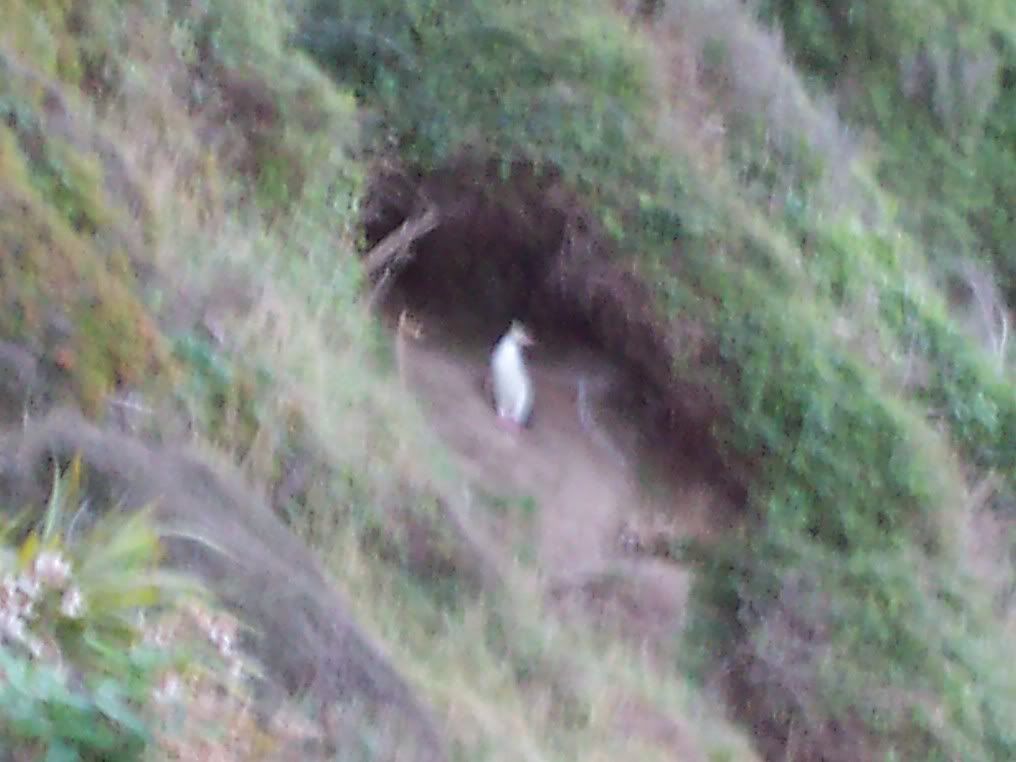A very blurry Yellow-Eyed Penguin - the rarest penguin in the world
The Foveaux ferry was less crazy than the day before, much to the relief of some on board our bus. We left at dawn, as we had a long day heading through the south-eastern tip of New Zealand. The coastal region here forms part of the Catlins Wilderness Area - a region of isolated forests and wildlife reserves. The area was once the haunt of the Moa - a gigantic flightless bird that reached 3m (9ft) in height.
Our first stop was another first for me - one of the world's most extensive petrified forests, at Curio Bay. From the cliff top it looks like any other rocky shore - but when you get down amongst the ankle-high boulders it hits you that they are tree stumps. 160 million years ago a cataclysmic event felled an entire forest, and then another immediately afterwards covered the remains forever. As with other fossils, the trees at Curio Bay are incredibly detailed - it's even possible to count rings on some of the stumps.
After a few more scenic stops at waterfalls, bays and inlets we finished the day at the aptly named Roaring Bay, to look at a very speical bird. The Hoiho is the world's rarest penguin as fewer than 3000 remain, living only in the sub-Antarctic islands and the southern tip of NZ. Every evening they come ashore from long feeding trips and clamber up the hillsides of Roaring Bay. Also known as the Yellow-Eyed Penguin, they are the only known solitary penguin species, preferring to live in single burrows - and they are very timid. Spike told us we'd be lucky to see two or three, but within an hour we counted ten emerge from the surf. Crouching quietly on the windy hillside, we were probably 100m from the knee-high birds as they staggered up the path to their nests. It was great - these were truly wild birds, and rare ones at that, going about their business in front of us. I just wish they were easier to photograph!